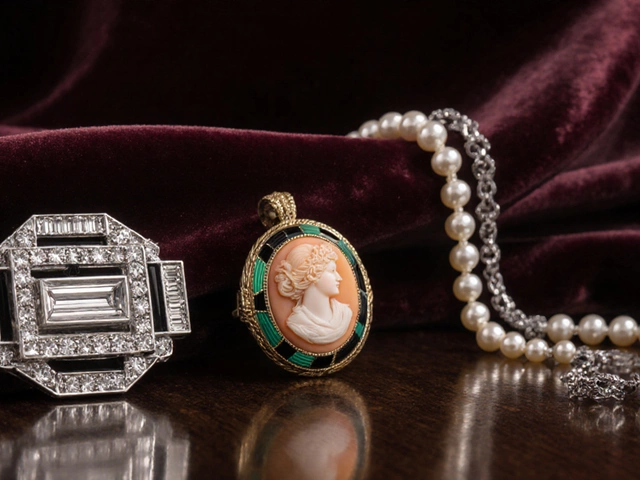Piercing Care: Essential Tips for Safe, Stylish Body Piercings
When working with Piercing Care, the routine of cleaning, protecting, and maintaining body piercings to prevent infection and preserve jewelry shine. Also known as after‑care, it is the backbone of any successful piercing journey. piercing care encompasses everything from the moment you get the first hole to the years you keep the piece in place. It requires knowledge of Nose Piercing, a common facial piercing that often uses a stud or hoop and needs specific cleaning methods, and an understanding of Jewelry Material, the metal or stone composition of the piece, which can affect healing speed and irritation risk. By linking these concepts, you’ll see why good after‑care improves healing, reduces scarring, and extends the life of your favorite studs.
First, let’s break down the core steps of a solid aftercare routine. The process starts with a gentle saline solution—mix one teaspoon of non‑iodized salt with eight ounces of warm water. Soak a clean cotton pad and hold it against the fresh piercing for three to five minutes, twice a day, for the first two weeks. This simple step keeps the area moist and flushes out bacteria, a key factor because proper cleaning reduces infection risk. After the initial phase, switch to a mild, fragrance‑free soap on your hands before touching the site; never apply alcohol or peroxide, as they can dry out tissue and delay healing. Keep hair, makeup, and tight clothing away from the piercing, and avoid swimming in chlorinated pools or hot tubs until the wound fully closes. These habits form a clear cause‑and‑effect chain: consistent cleaning enables the body’s natural repair mechanisms, which leads to quicker, smoother healing.
Choosing the Right Jewelry and Materials
The metal you wear plays a surprisingly big role in how comfortably a piercing heals. Surgical stainless steel, titanium, and niobium are hypoallergenic options that rarely trigger reactions. Gold looks great but can contain alloys that irritate sensitive skin, especially if the piece is less than 14 karat. For nose rings, many experts recommend seamless hoops or smooth studs to avoid snagging on the inside of the nostril. If you prefer a decorative stone, make sure it’s set securely and isn’t porous, because moisture can get trapped and cause infection. In short, the material you pick Jewelry Material directly influences the body's response—clean, inert metals support healing, while reactive alloys hinder it.
Beyond the metal, size and shape matter. A well‑fitted stud should sit snugly against the tissue without pressing too hard, which can cause pressure necrosis. Oversized hoops can pull on the skin, leading to prolonged redness and tearing. When you first get a nose piercing, a 1‑mm gauge is standard; you can stretch later if you want a larger look, but only after the original hole has fully healed (usually six to eight weeks). This sequential approach respects the body’s natural timeline and prevents premature trauma.
Now, let’s address common mistakes that sabotage good Piercing Care practices. First, touching the piercing with unwashed hands is a fast track to bacterial invasion. Second, rotating or changing jewelry too soon disrupts the forming scar tissue, often leading to prolonged swelling. Third, using harsh chemicals like hydrogen peroxide gives the illusion of cleanliness but actually strips away the protective film that new tissue builds. Finally, neglecting to change the saline solution daily can let salt crystals build up, creating an irritant environment. Each of these errors creates a negative feedback loop: irritation invites infection, infection prolongs healing, and prolonged healing increases the chance of scarring.
To keep your piercings looking great, schedule regular check‑ins with a professional piercer, especially if you notice persistent redness, discharge, or unusual pain after a month of diligent care. A trained piercer can spot early signs of allergic reactions to the metal or advise when it’s safe to upgrade to a larger gauge. Remember, the goal of piercing care isn’t just to avoid problems—it’s to let you enjoy the aesthetic and cultural value of body jewelry for years to come.
Armed with these basics—cleaning techniques, material choices, and common pitfalls—you’re ready to dive deeper. Below you’ll find articles that explore nose‑ring designs, detailed after‑care schedules, how to spot infection early, and style tips that match every outfit. Whether you’re a first‑timer or a seasoned piercing enthusiast, the collection offers practical insights you can apply right away.

Why You Shouldn't Insert a Nose Ring Immediately: Essential Tips and Designs
Getting a nose piercing is a popular fashion statement, but it's important to understand why you can't immediately switch to a nose ring. This article explores the healing process, the necessity of a stud for initial piercings, and the hygiene and customization options available. Interesting facts about different nose pin designs are also included to help in making an informed choice.
read more





